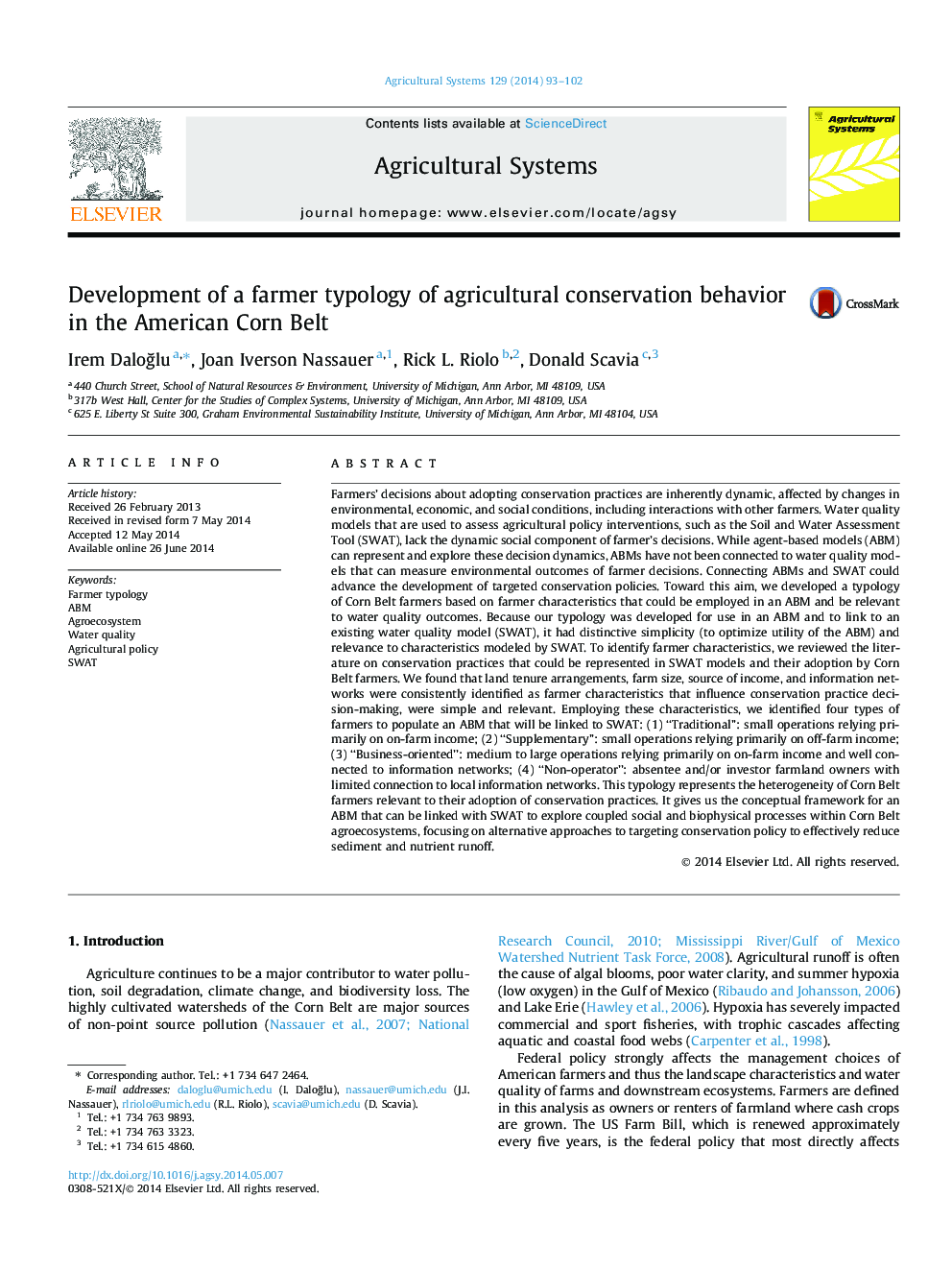| کد مقاله | کد نشریه | سال انتشار | مقاله انگلیسی | نسخه تمام متن |
|---|---|---|---|---|
| 4491228 | 1623241 | 2014 | 10 صفحه PDF | دانلود رایگان |
• A typology of Corn Belt farmers is developed to be employed in an ABM.
• The typology denotes the heterogeneity of farmers in conservation practice adoption.
• Land tenure, farm size, source of income, and information networks are influential.
• Typology is a framework to explore agricultural coupled human and natural systems.
Farmers’ decisions about adopting conservation practices are inherently dynamic, affected by changes in environmental, economic, and social conditions, including interactions with other farmers. Water quality models that are used to assess agricultural policy interventions, such as the Soil and Water Assessment Tool (SWAT), lack the dynamic social component of farmer’s decisions. While agent-based models (ABM) can represent and explore these decision dynamics, ABMs have not been connected to water quality models that can measure environmental outcomes of farmer decisions. Connecting ABMs and SWAT could advance the development of targeted conservation policies. Toward this aim, we developed a typology of Corn Belt farmers based on farmer characteristics that could be employed in an ABM and be relevant to water quality outcomes. Because our typology was developed for use in an ABM and to link to an existing water quality model (SWAT), it had distinctive simplicity (to optimize utility of the ABM) and relevance to characteristics modeled by SWAT. To identify farmer characteristics, we reviewed the literature on conservation practices that could be represented in SWAT models and their adoption by Corn Belt farmers. We found that land tenure arrangements, farm size, source of income, and information networks were consistently identified as farmer characteristics that influence conservation practice decision-making, were simple and relevant. Employing these characteristics, we identified four types of farmers to populate an ABM that will be linked to SWAT: (1) “Traditional”: small operations relying primarily on on-farm income; (2) “Supplementary”: small operations relying primarily on off-farm income; (3) “Business-oriented”: medium to large operations relying primarily on on-farm income and well connected to information networks; (4) “Non-operator”: absentee and/or investor farmland owners with limited connection to local information networks. This typology represents the heterogeneity of Corn Belt farmers relevant to their adoption of conservation practices. It gives us the conceptual framework for an ABM that can be linked with SWAT to explore coupled social and biophysical processes within Corn Belt agroecosystems, focusing on alternative approaches to targeting conservation policy to effectively reduce sediment and nutrient runoff.
Journal: Agricultural Systems - Volume 129, July 2014, Pages 93–102
